There are so many delicious recipes coming out of the North African country of Morocco. Maybe I enjoy the cuisine so much because it not only combines what I really love the most- that mixture of Mediterranean with Middle Eastern flavors- but also because the country itself was the very first place I ever heard the call to prayer, or the adhan. I visited Tangiers during a short trip while on holiday during a study abroad in Spain and it changed my life forever. I arrived frightened and scared at all of the tall tales I was told about visiting such a ‘mysterious’ place, but left with my heart open to an entirely new, peaceful and serene way of living.
And, it was Ramadan.
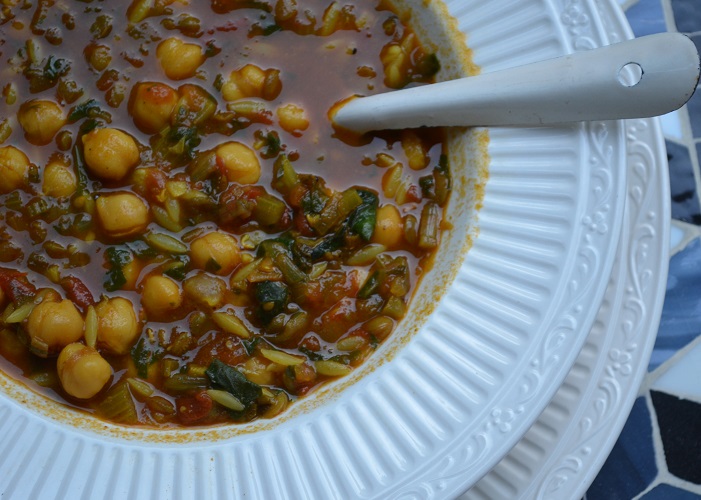
Sadly, I didn’t each much while I was there, mostly out of ignorance of the food rituals of the fasting day and not having much direction about where to go, although we did have a wonderful tour guide who took us to a restaurant that would serve us a lovely meal. I just remember feeling a little sad that it wasn’t more bustling with people at the time. Now I understand why.
Upon return to the States, I read everything I could about Moroccan cuisine and fell even more in love with the spice trail, the sweet and savory combinations and the love of local foods and beautiful agricultural lands that surround eclectic food-loving cities like Marrakesh, a place that is still on my travel destination wish list.
With this year’s Ramadan being in the summer, I wanted to find a light and healthy soup and was reminded by all the cookbooks I have about Moroccan cooking, that harira is the soup to make in this holy month where we’re fasting from before dawn to sunset time. The only problem is, there are countless varieties of harira recipes. Different regions make it different ways and even families make it differently, tweaking it according to their own preferences and perhaps local food availability. This could be frustrating for someone just wanting a traditional recipe, but I actually found it quite freeing- I, too, would make my own according to what I had on hand, what was preferable in our home, but sticking as close to the traditional taste and cooking method as possible. At the end, what was important to me was that I tasted Morocco in the dish and that it was nourishing after a long day of fasting. I don’t use meat or meat bones in this recipe, but you could; instead I use lamb broth which can be swapped out for vegetable broth and therefore made completely vegetarian.
That said, if this recipe isn’t how you’re used to having harira, I’d love to hear what different things you do in the comments below.
Here are the ingredients I used- and I’m well aware that I’m missing carrots, but I didn’t have them on hand and it came out wonderful just the same:

Tomatoes, chickpeas (cooked), onions, lentils (cooked), celery, olive oil, tomato paste, garlic, cumin, coriander, turmeric, smoked paprika, red pepper flakes, cinnamon, black pepper, sea salt, leafy greens mix (Swiss chard and some kale), fresh herbs (mint, parsley, cilantro) and orzo (I was out of vermicelli).
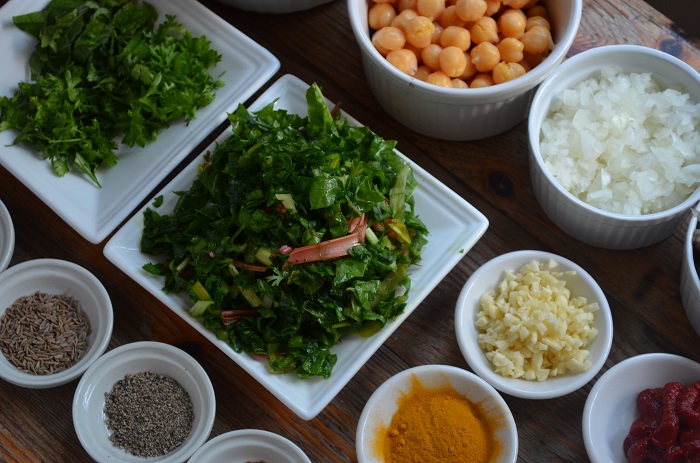
I did not put an egg in at the end of the cooking process, but you could definitely do that; it’s really very good that way, too.
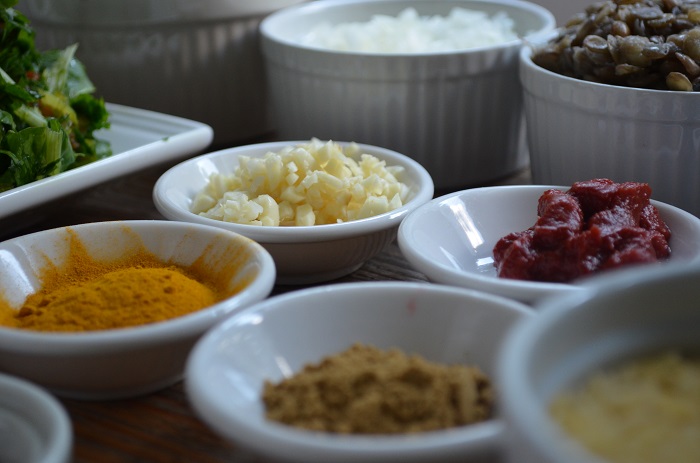
Use a large pot or Dutch oven to make the soup, which serves 6-8 depending on soup bowl sizes.
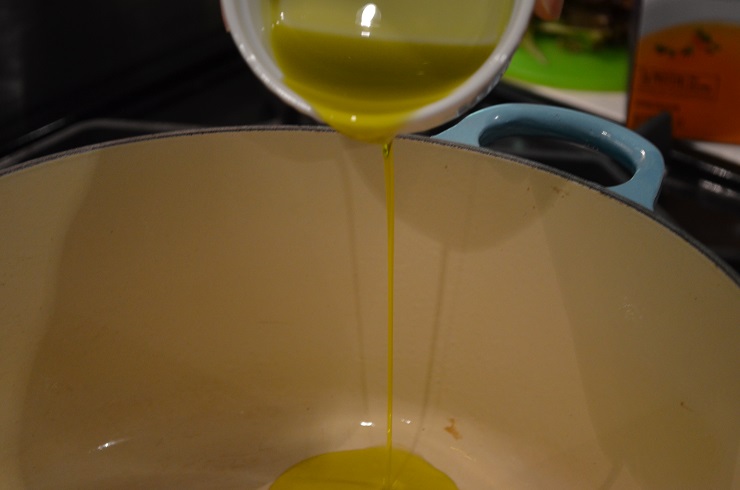
Once it’s gently heated, add the onions.
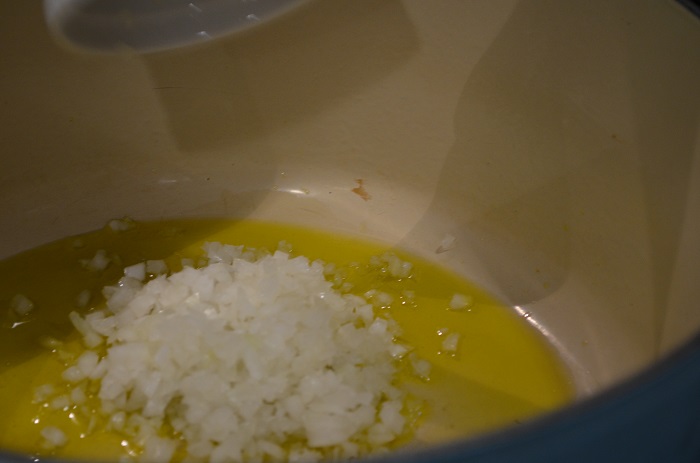
And the chopped celery stalks, diced small.
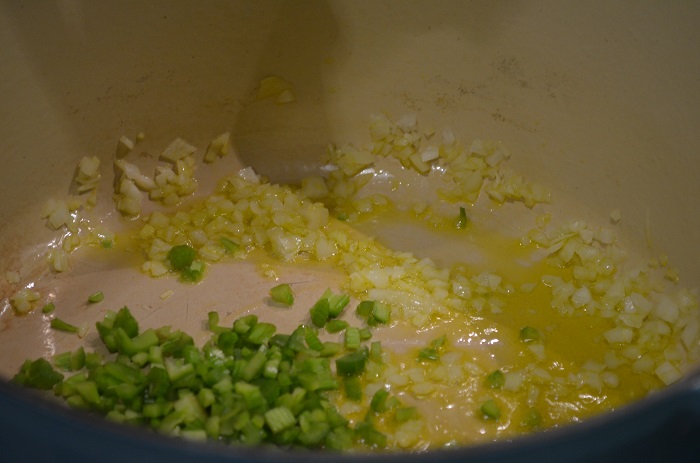
Next, add the tomatoes.
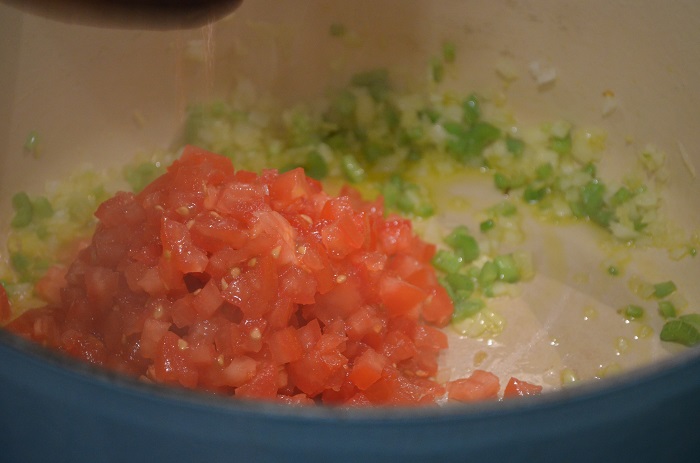
Give it a stir and a chance to heat up and cook down a minute or two.
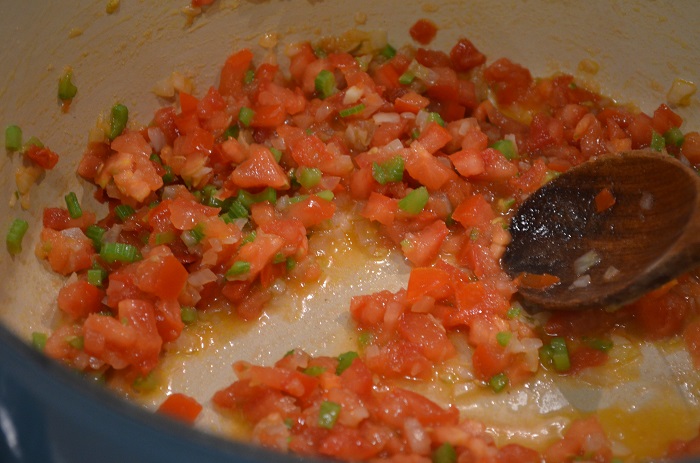
Now add the tomato paste.
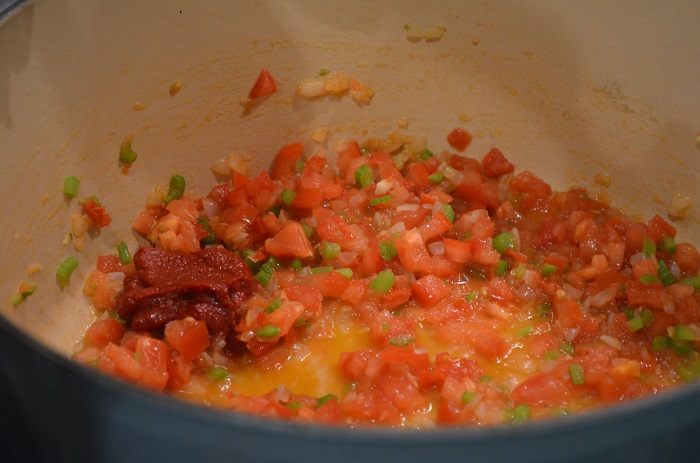
and minced garlic.
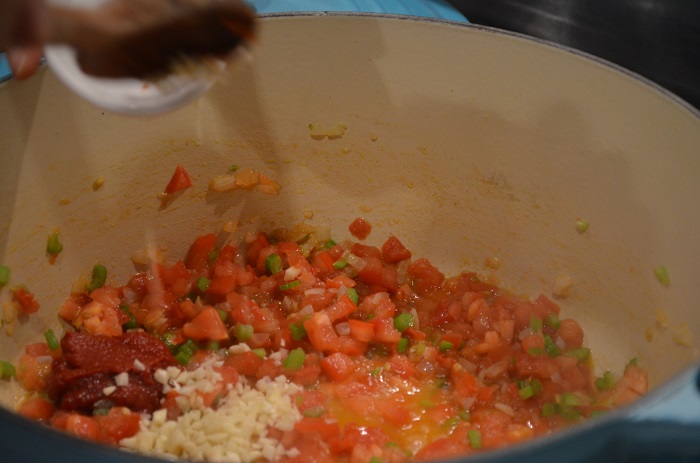
salt and pepper and all the rest of the spices can go in now, in no particular order.
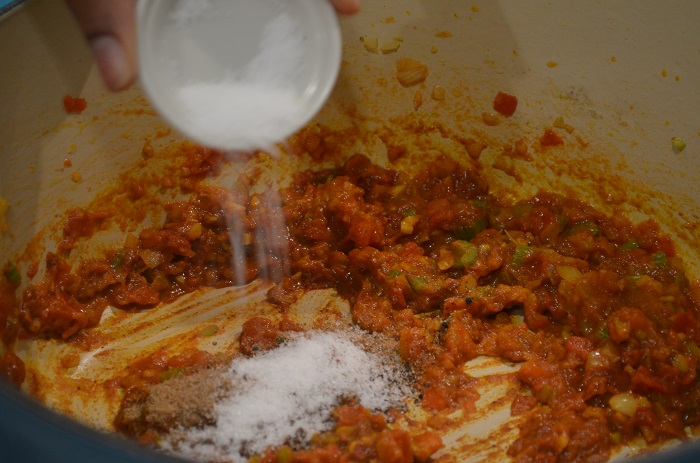
Just watch that turmeric- it stains! And somehow I always end up wearing white on the days I’m cooking with it, go figure.
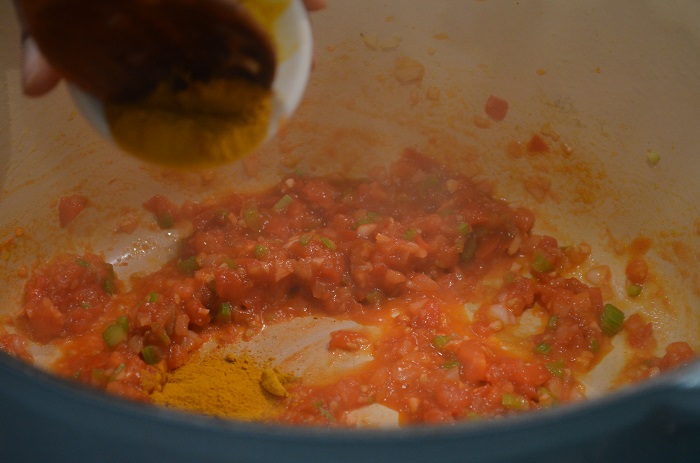
Now the lentils- mine are extra cooked here, which is fine because I wanted them to be really soft (i.e. I let them cook a little too long on the stove- probably because I was back here blogging about something else).
Anyway, you can cook your own or just get the canned ones. Just don’t do what I did- they’re still completely edible but just not as pretty as if you cook them just right.
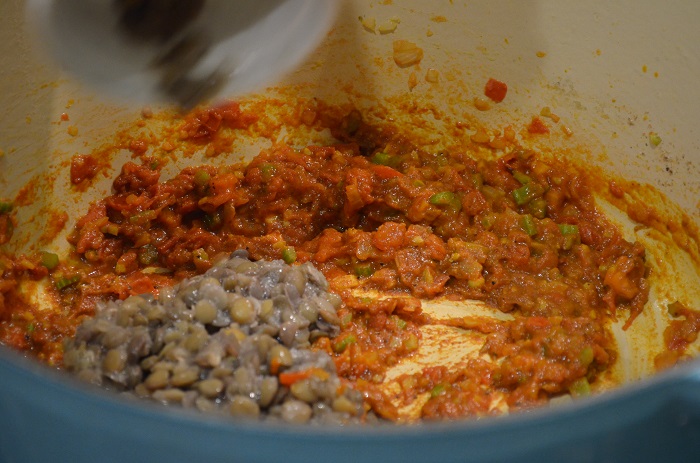
Then blend them right into the mixture of all the other stuff you put in the pot. It all starts to look and smell amazing at this point. I like to give credit to the tomatoes sand tomato paste, but that’s just my food favoritism coming through…
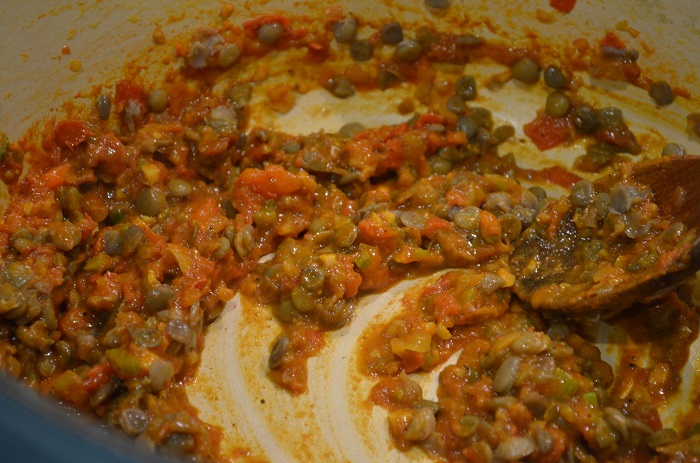
Now add the cooked chickpeas. These were canned, but you can (and should) cook your own, in my opinion.
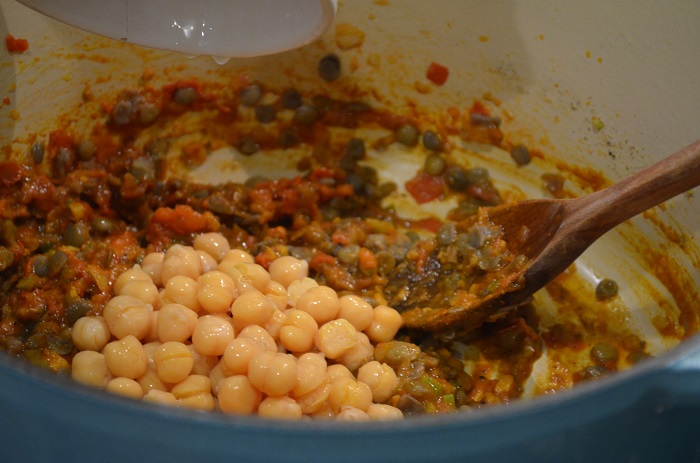
Now add the herbs. These were fresh from my garden. I love saying that…
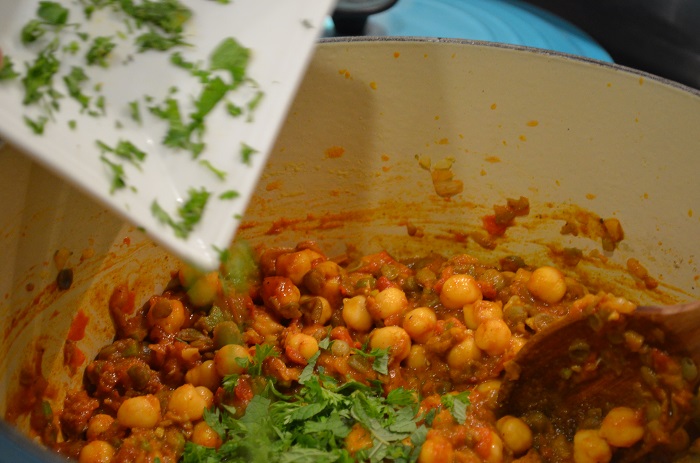
Mix it all up and that greenery makes it look lovely once again, and the aroma is captivating- it will make you feel like you’re traveling half way around the world right from your kitchen.
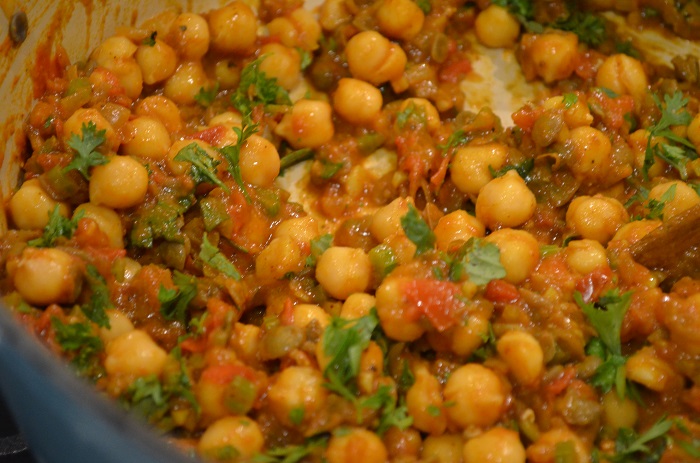
Now the really important stuff. Why? Because, broth is not easy to make nor is it easy to get. Granted, it’s not hard to make. But it’s time-consuming and requires quite a bit of babying the broth over the stove to skim off all the impurities and keep a watchful eye on it every so often so that it comes out just right. Believe me, I know. I have made my own- chicken, vegetable, duck, lamb, beef and seafood. Mostly I made them because they make your meals so rich and delicious and also because many commercial brands have gelatin (obviously from the gelatin created by animal bones), they are mostly not halal. Saffron Road has several halal varieties and I’m incredibly grateful for the lamb broth because it’s rich enough that it darkens up many of my dishes with that added layer of flavor that simply makes your food taste like it came from a fancy restaurant. Really.

I use one whole box for this recipe.
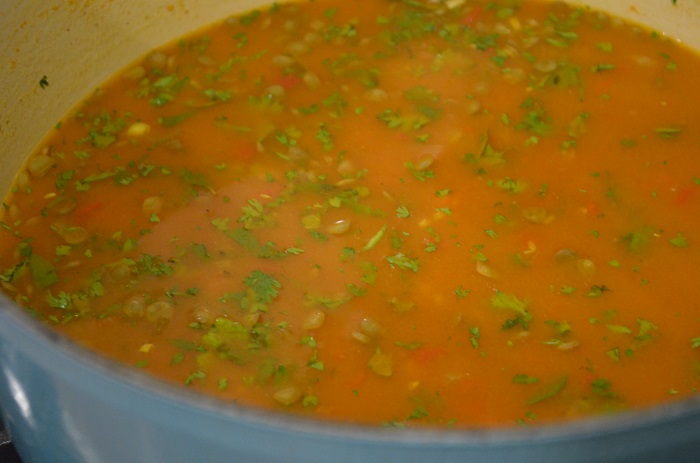
Let it all come to a boil, then reduce the heat to a medium flame and cook for 20 minutes.
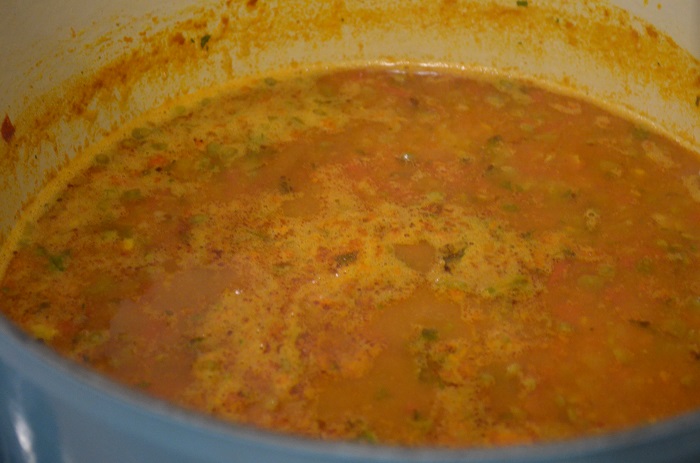
The soup is almost done. You can skp the greens, if you don’t have them or don’t want them. I have so many on hand right now, alhamdullilah, that it was just necessary to add and a very delicious addition at that.
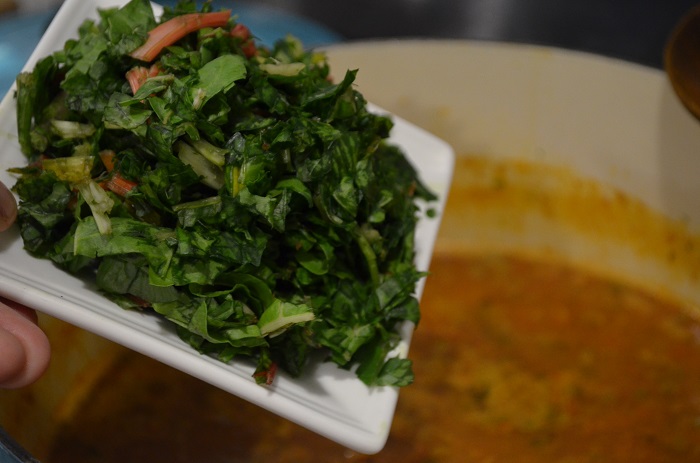
Stir it all in.
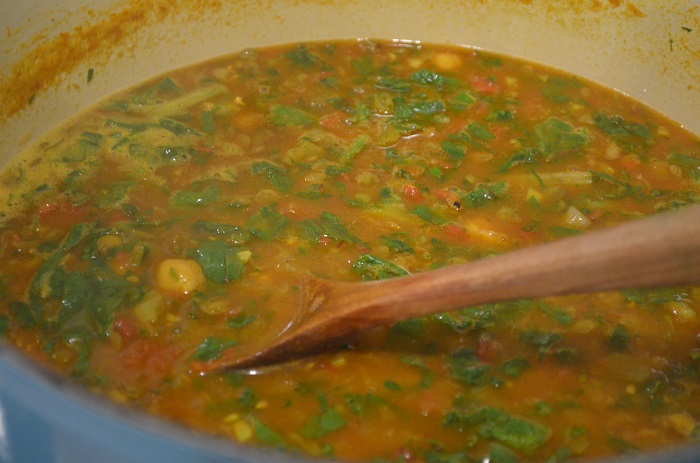
Now for the orzo. I love orzo and always have it in my pantry because it’s great for so many soup additions. I rarely buy vermicelli, which is the more ‘traditional’ noodle to put in harira. I say use what you’ve got and make it your own. Some recipes call for adding flour to the soup, but I find that the orzo, with all its starch, will thicken up the soup a bit at first and much more later if you let it sit, especially overnight. Let the orzo (or any noodle) cook according to its own package instructions. In this case, it was about 7-10 minutes.

I took the harira off the flame before it got too thick (that’s what it will do overnight unless you add more broth) because I wanted to eat it as a soup for Iftar.
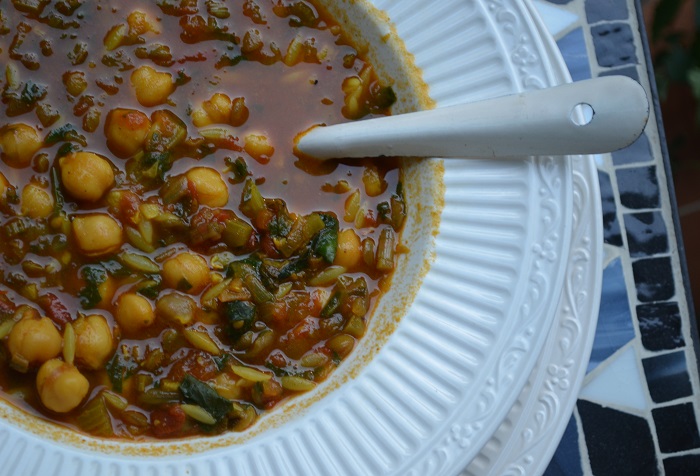
It was so very delicious and so very special. Even though I’m not Moroccan, it felt like I was experiencing a true Ramadan dish, if not for my own family tradition, then for one that a whole country loves to have on their Iftar tables. That was special enough for me to consider making it.
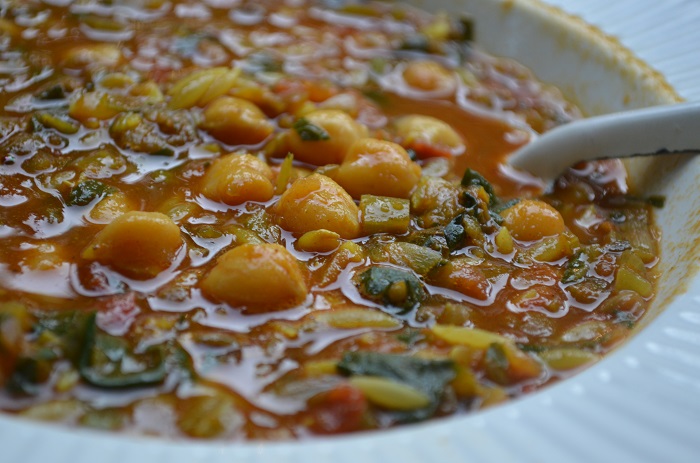
Does your family or someone you know make harira? How is it different or the same as this one?
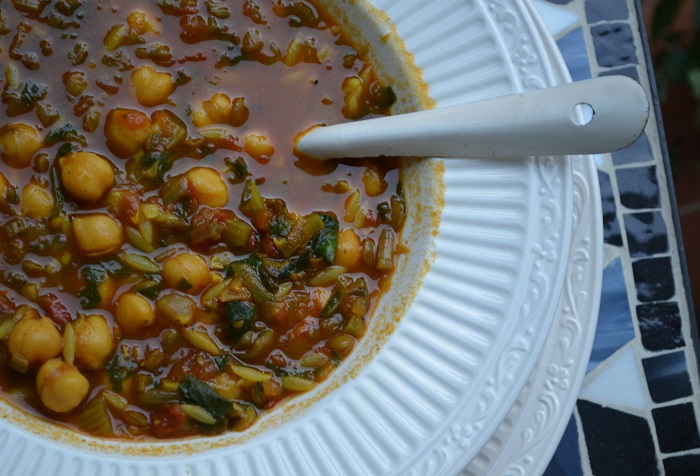

- 4 tablespoons olive oil
- 1 yellow onion, minced (about 1/2 cup)
- 2 celery stalks, diced small
- 4 tomatoes, diced
- 3 cloves garlic, minced
- 2 tablespoons tomato paste
- 1 cup cooked brown lentils
- 2 cups cooked chickpeas
- 2 teaspoons ground cumin
- 1 teaspoon ground coriander
- 1.5 teaspoons smoked paprika
- 1/2 teaspoon ground cinnamon
- 1/8 teaspoon red pepper flakes (optional)
- 1.5 teaspoon sea salt
- 1 teaspoon freshly ground black pepper
- 2-3 tablespoons fresh mint leaves, chopped
- 2-3 tablespoons fresh parsley leaves, chopped
- 2-3 tablespoons fresh cilantro stems and leaves, chopped
- 1 carton (32 fl oz) Classic Culinary Lamb Broth by Saffron Road
- 1 cup mixed fresh greens (i.e. spinach, kale, Swiss chard)
- 1/2 cup orzo or small pasta noodles
- fresh lemon or lime wedges (optional)
- In a large Dutch oven, heat the olive oil gently. Add the onions and cook until translucent. Add the celery stalks and do the same.
- Add the tomatoes and cook down for 1-2 minutes then add the garlic and tomato paste. Stir to combine then add the lentils, chickpeas and all of the spices. Add the fresh herbs, too.
- Pour in the lamb broth and bring the entire mixture to a boil. Reduce the heat to medium-low and cover, cooking for about 20 minutes.
- Add the fresh greens and orzo and gently stir to combine. Raise the heat slightly and let cook for 10-12 minutes, or the amount of time given for the type of pasta/noodle being used.
- When finished, remove from heat immediately.
- Serve with a lemon or lime wedge for guests who would like to squeeze one into the soup before eating.
The post Harira, the Moroccan Soup for Ramadan appeared first on My Halal Kitchen | Inspiration for Wholesome Living